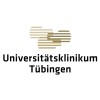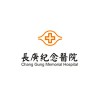
Effects of Using the Electrodress Mollii on Spasticity
SpasticityMuscle2 moreSpasticity is a common manifestation of lesions of central motor pathways, such as after stroke, traumatic brain or spinal cord injury and in cerebral palsy and is associated with increased impairments and disabilities. Spasticity may be associated with pain and contractures, caused by muscle weakness, reduced muscle length and volume that add to the disability.Treatments of spasticity comprise physical therapy, pharmacological agents and surgical treatment. Recently, a systematic review concluded that transcutaneous, electric nerve stimulation may have beneficial effects on spasticity and activity performance after stroke, which lends support to the new treatment method Mollii, which will be evaluated in this study.The Mollii suit provides electric stimulation through multiple electrodes places in a tight fitting suit. This study relates to the clinical trials performed at the University department of rehabilitation medicine at Danderyd Hospital in Stockholm and comprises an initial study of effects on spasticity ("Mechanical substudy") and a following, exploratory treatment trial ("Clinical substudy") in patients with spasticity after stroke.

Physiotherapy in Hereditary Spastic Paraplegia
Hereditary Spastic ParaplegiaGoal of this study is to develop and evaluate a physiotherapy concept that is focused on bilateral leg spasticity and aims to reduce spastic gait disturbance and to improve mobility in patients suffering from HSP.

The Effect of Extracorporeal Shock Wave Therapy After Botulinum Toxin Type A Injection for Post-stroke...
StrokeHemiplegia2 moreThere are few studies on whether botulinum toxin treatment and extracorporeal shock wave therapy are more effective than botulinum toxin alone treatment for post-stroke spasticity.

Evaluation of Tibial Nerve Selective Neurotomy Compared to Botulinum Toxin Injections for Spastic...
Post Stroke SeizureSpastic FootIn France, more than 110.000 patients are hospitalized for stroke per year. It is the leading cause of sudden disabilities in adults. Incidence of spastic foot is evaluated at 1 year post stroke from 18% to 56% of hemiplegic patients. Spasticity, defined as an increase in the velocity-dependent response to muscle stretch measured at rest, is part of the upper motor neuron syndrome and is characterized by an increase in tonic stretch reflex. It has been proposed that upper motor neuro syndrome may induce not only spasticity but also other types of muscles overactivity such as spastic dystonia, co-contraction and clonus. In hemiplegic patients, lower limb spasticity within the posterior part of the leg frequently results in equino-varus foot and toes claw. These abnormal postures in hemiplegics may affect activities of daily living such as shoes fitting, balance, ambulation-walking, comfort (pain) and may become irreducible (tendon shortening) if not treated. The purpose of this study is to compare the interest of each treatment (BoNT-A versus STN) in order to specify both techniques indications and up-date current guidelines of lower-limb spasticity for hemiplegic patients. This study aims to confirm a greater reduction of calf muscles spasticity after STN as compared to BoNT-A, as observed in the only published monocentric randomized controlled trial. Our study originality is to perform a multi-center RCT with a pre-established sample size. This study will also quantify progress towards personal goals using the goal attainment scaling (GAS) and will assess other components related to the consequences of carve muscle spasticity on balance, ambulation, self-care and quality of life.

Halliwick Concept on Motor Functions in Spastic CP
Spastic Cerebral PalsySpastic Hemiplegic Cerebral PalsyThis randomized controlled trial will investigate the effect of hydrotherapy (halliwick concept) on motor functions in children with spastic cerebral palsy (CP). Minimum of 30 Spastic CP children will be recruited for this study. Children will be randomly assigned into control group who will receive conventional selected exercise treatment or study group who will receive the same conventional program in addition to underwater exercise program. Motor function will be evaluated at baseline and after 3 months of treatment. No potential harms are expected during this study.

TENS and Spasticity in Stroke Patients
Strokestudy aims to evaluate the efficacy of high and low frequency TENS on spasticity, strength and functional status in stroke patients. It may provide further knowledge concerning the use of TENS for motor impairments in stroke patients and may clarify ambiguities to some extent.

Analyzing the Effect of Trunk Training on Limbs in Children With Spastic Cerebral Palsy
Cerebral PalsySpasticThe purpose of this study is to analyze if trunk training has effects on trunk, upper, lower extremity motor functions in children with spastic Cerebral Palsy. Second purpose is to analyze the relation between trunk control and prematurity, birth weight, upper and lower extremity motor functions in children with spastic Cerebral Palsy.

Use of Ultrasound in Injections of Botulinum Toxin
SpasticityIntramuscular injections of botulinum toxin are currently the best focal treatment of spasticity, with clearly defined indications and role. French and European recommendations focus on the toxin's mode of administration, which must be as precise as possible. The toxin's specific action on motor endplates (blocking the release of acetylcholine) shows the importance of targeted injections within the muscle belly. The pain caused by these injections is due partly the number of injections (up to 30 in a single session), and partly to the use of electrical stimulation guidance. Prevention and alleviation of the pain caused by these injections have become a regulatory obligation since the law of 4 March 2002 relating to the rights of patients and the quality of the health system (" Any person has the right to receive relief from pain, which must, under all circumstances, be prevented, evaluated, taken into account and treated … ").

Study of VSN16R for the Treatment of Spasticity in Multiple Sclerosis
Spasticity in People With Multiple SclerosisPhase II a Proof of concept study in Multiple Sclerosis (MS) patients with spasticity.

Comparative Hybrid Effects of Combining BoNT-A With Robot-assisted or Mirror Therapy for U/E Spasticity...
StrokeThe aim of this study will be to determine and compare the immediate and longer-term effects of combination of BoNT-A injection and mirror therapy vs combination of BoNT-A injection and robot-assisted therapy.
